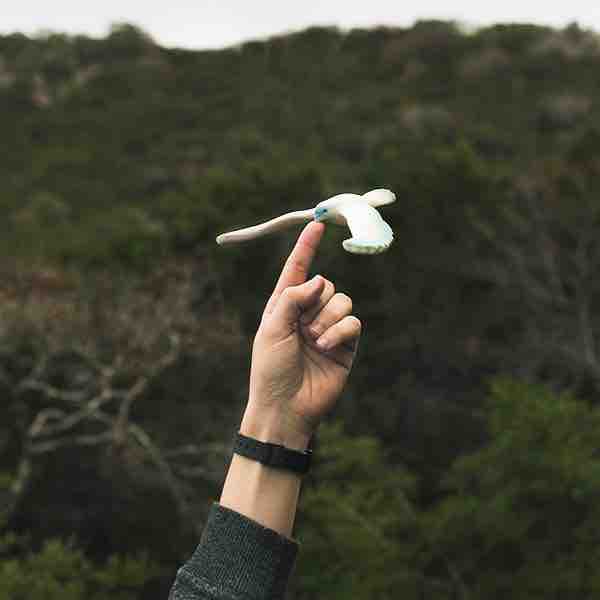Center of Gravity
When people think of objects, they think of them as singular particles of matter. In fact, every object is made up of millions of particles, all of which behave differently when moved. When people observe a stick being thrown in the air, it seems as though the entire object is moving at the same trajectory and velocity, but each particle is being subjected to a different motion in space and acceleration, depending on its place. The different parts of the body have different motions. shows the motion of a stick in the air: it seems to rotate around a single point. Three-dimensional bodies have a property called the center of mass, or center of gravity. This center of mass's main characteristic is that it appears to carry the whole mass of the body.

Center of Gravity
Although the center of mass is in the midpoint of the stick, all of the particles are moving as well.
The center of mass does not actually carry all the mass, despite appearances. Given a hollow sphere, the center is the center of mass, even though it does not actually have anything in it. As seen in , it looks as if the external forces of gravity appear to be working only on the center of mass, but each particle is being pushed or pulled by gravity. The center of mass is much easier to use when discussing bodies, because no one has to analyze each individual particle.
Mathematical Expression: The mathematical relation of center of gravity is read as: 'the position of the center of mass and weighted average of the position of the particles. '
Specifically: 'the total mass x the position of the center of mass= ∑ the mass of the individual particle x the position of the particle. ' The center of mass is a geometric point in three-dimensional volume. When using the definition above, it yields the following equation for center of mass:
where r is the reference axis x, y, or z; m is individual mass; ri is the individual position; and M is the total mass.
When taking the center of mass of an oddly shaped object, it is helpful to break it down into smaller sections whose mass and properties are easier to evaluate, and then add the products of the individual masses and positions and divide by the total mass.

Center of Mass
This child's toy uses the principles of 'center of mass' to stay balanced on a finger.